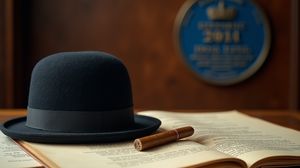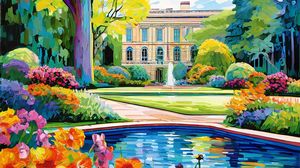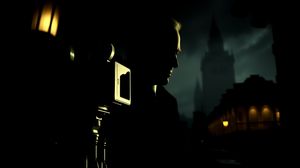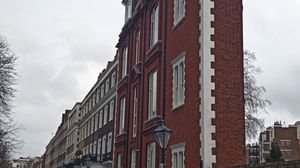
The blue plaque commemorating Sir Winston Churchill is a tribute to one of Britain's most revered statesmen. Churchill, renowned for his leadership during World War II, lived at 28 Hyde Park Gate in London. The blue plaque marks this residence, offering visitors a glimpse into the personal life of the man who became synonymous with British resilience and determination.
Winston Churchill's time at this address spanned several years, with the property serving as his London home from 1945 until his death in 1965. It was here that he spent time writing, reflecting, and entertaining many distinguished guests in the company of his family.
The blue plaque recognition adds a layer of historic and cultural significance to the venue, indicating that Churchill's residence was deemed an important site by English Heritage. Such plaques are reserved for locations connected to notable figures, celebrating their contributions to British heritage.
Visitors may find it intriguing that Churchill, despite his larger-than-life public persona, was known to paint as a hobby during his time at Hyde Park Gate. His art offered him a sense of tranquility and an escape from the stresses of his political career.
Hyde Park Gate is not far from some of London's most iconic museums and green spaces, allowing visitors to easily incorporate a stop at the blue plaque into a broader exploration of the city's rich history and culture.

Making the Most of Your Visit:
If you're heading to see Winston Churchill's blue plaque at 28 Hyde Park Gate, it's worth timing your visit for a quieter time. Early mornings during weekdays are usually less busy, offering a more reflective moment to appreciate this historic spot without the crowd.
Make sure to take a moment to look at the architecture of the house at 28 Hyde Park Gate itself. It's not just about the plaque—Churchill's residence is a beautiful example of the design aesthetics from the era, offering insight into the surroundings that shaped his personal life.
Once you're there, if you're a photography enthusiast, try experimenting with angles. Capture the plaque against the backdrop of the street, as it provides a unique juxtaposition of history amidst a vibrant city.
Bring along a good biography or book about Churchill. It can be quite moving to stand outside his former home while reading about his significant life events that happened around that very area.
The nearby Kensington Gardens makes for a perfect spot to sit and reflect after visiting. Following in Churchill's footsteps, you might even bring a sketchpad and enjoy a moment of peace and creativity that he himself valued so highly.

Visiting Times & Costs:
Winston Churchill's Blue Plaque at 28 Hyde Park Gate is located in London but does not have specific opening hours as it is part of a residential area. The plaque is visible from the street, making it accessible at any time for those wishing to view it.
There is no entrance fee to see the blue plaque as it is a public commemoration on the exterior of a private residence.
Regarding accessibility, the plaque itself should be easily visible from the sidewalk, though the street area can sometimes be narrow. Visitors may need to navigate standard urban obstacles such as kerbs and traffic.

Address & Map:

Nearby:























